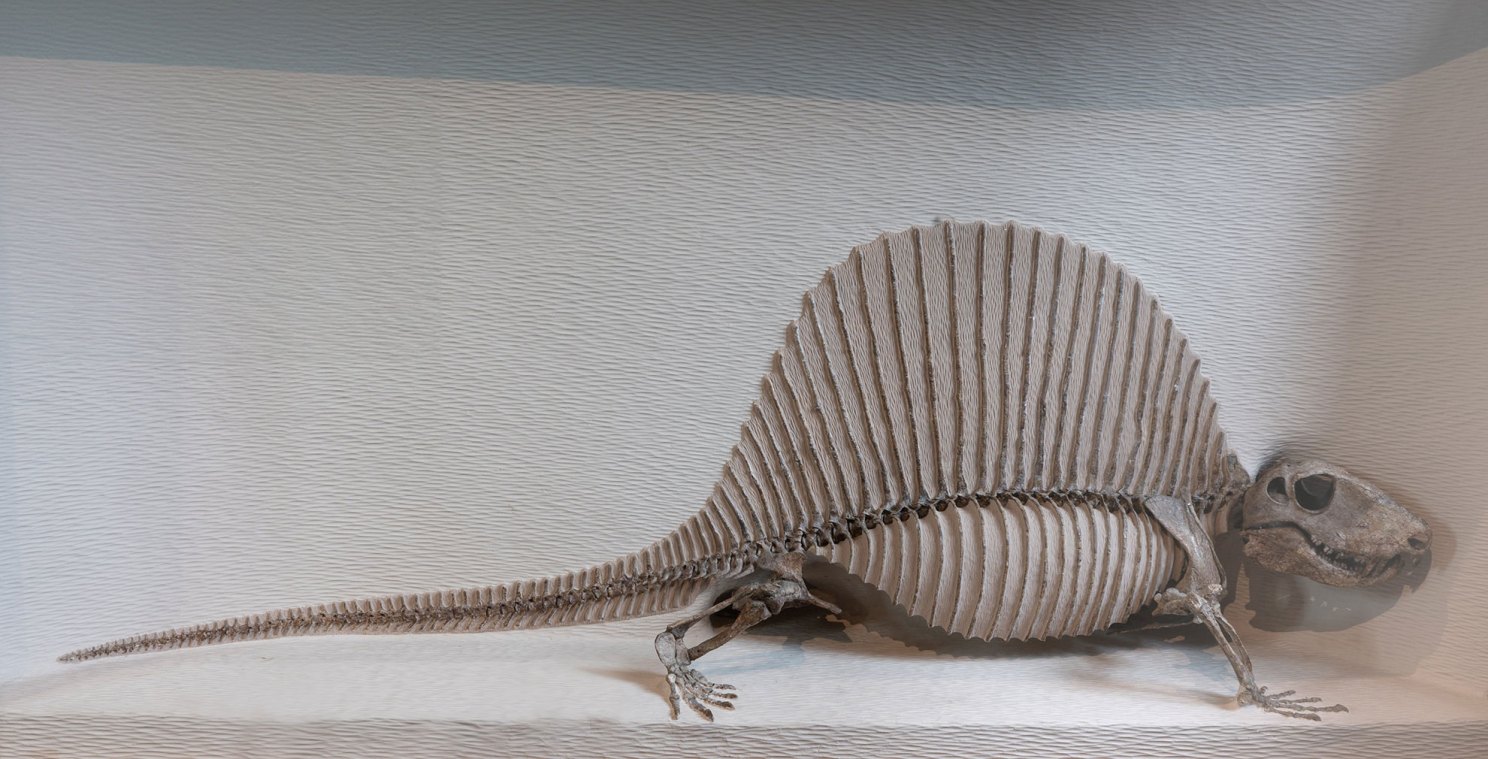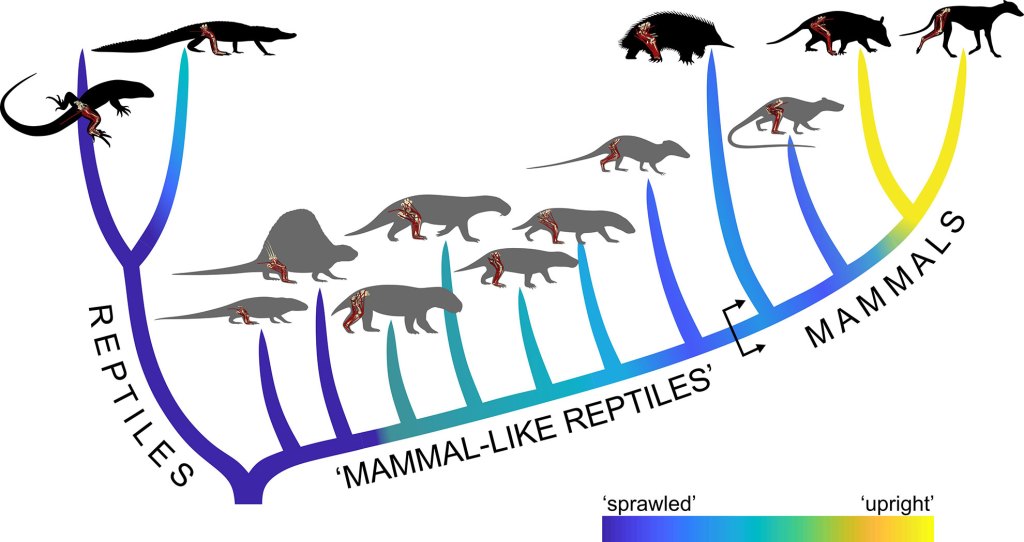How mammals got their stride

Fossil of the early sail-backed synapsid Dimetrodon from 290 million years ago was investigated during the study.
Credit: Peter Bishop/Museum of Comparative Zoology, © President and Fellows of Harvard College
Revealing twists, turns of evolution from sprawling to upright posture
Mammals, including humans, stand out with their distinctively upright posture, a trait that fueled their evolutionary success. Yet the earliest known ancestors of modern mammals more closely resembled reptiles, with limbs stuck out to their sides in a sprawled posture.
The shift from a sprawled stance like that of lizards to the upright posture of modern mammals, as in humans, dogs, and horses, marked a pivotal moment in evolution. Despite more than a century of study, the exact how, why, and when behind this leap has remained elusive.
A new study published in Science Advances provides fresh insights into this mystery, revealing the shift from a sprawled to upright posture in mammals was anything but straightforward. Using methods that blend fossil data with advanced biomechanical modeling, the researchers found that this transition was surprisingly complex and nonlinear, and occurred much later than previously believed.
Lead author and postdoctoral fellow Peter Bishop, and senior author Professor Stephanie Pierce, both in the Department of Organismic and Evolutionary Biology, began by examining the biomechanics of five modern species that represent the full spectrum of limb postures, including a tegu lizard (sprawled), an alligator (semi-upright), and a greyhound (upright).
“By first studying these modern species, we greatly improved our understanding of how an animal’s anatomy relates to the way it stands and moves,” said Bishop. “We could then put it into an evolutionary context of how posture and gait actually changed.”

Evolutionary interrelationships of the modern (black) and extinct (gray) species investigated. The study revealed a complex history of posture evolution in synapsids, and that a fully “upright” posture typical of modern placentals and marsupials was late to evolve.
Credit: Peter Bishop
The researchers extended their analysis to eight exemplar fossil species from four continents spanning 300 million years of evolution. The species ranged from the 1-ounce proto-mammal Megazostrodon to the Ophiacodon, which weighed hundreds of pounds, and also included animals like the sail-backed Dimetrodon and the saber-toothed predator Lycaenops. Using principles from physics and engineering, Bishop and Pierce built digital biomechanical models of how the muscles and bones attached to each other. These models allowed them to generate simulations that determined how much force the hindlimbs could apply on the ground.
“The amount of force that a limb can apply to the ground is a critical determinant of locomotor performance in animals,” said Bishop. “If you cannot produce sufficient force in a given direction when it’s needed, you won’t be able to run as fast, turn as quickly, or worse still, you could well fall over.”
The computer simulations produced a 3D “feasible force space” that captures a limb’s overall functional performance. “Computing feasible force spaces implicitly accounts for all the interactions that can occur between muscles, joints, and bones throughout a limb,” said Pierce. “This gives us a clearer view of the bigger picture, a more holistic view of limb function and locomotion and how it evolved over hundreds of millions of years.”
While the concept of a feasible force space has been around since the 1990s, this study is the first to apply it to the fossil record to understand how extinct animals once moved. The authors packaged the simulations into new “fossil-friendly” computational tools that can aid other paleontologists in exploring their own questions, as well as help engineers design better bio-inspired robots that can navigate complex or unstable terrain.
The study revealed several important “signals” of locomotion, including that the overall force-generating ability in the modern species was maximal around the postures that each species used in their daily behavior. Bishop and Pierce say this made them confident that the results obtained for the extinct species genuinely reflected how they stood and moved when alive.
After analyzing the extinct species, the researchers discovered that locomotor performance peaked and dipped over millions of years, rather than progressing in a simple, linear fashion from sprawling to upright. Some extinct species also appeared to be more flexible — able to shift back and forth between more sprawled or more upright postures, like modern alligators and crocodiles do. Others showed a strong reversal toward more sprawled postures before mammals evolved. Paired with the study’s other results, this indicated that the traits associated with upright posture in today’s mammals evolved much later than previously thought, most likely close to the common ancestor of therian mammals.
These findings also help reconcile several unresolved problems in the fossil record. For example, it explains the persistence of asymmetric hands, feet, and limb joints in many mammal ancestors, traits typically associated with sprawling postures among modern animals. It can also help explain why fossils of early mammal ancestors are frequently found in a squashed, spread-eagle pose — a pose more likely to be achieved with sprawled limbs, while modern placental and marsupial fossils are typically found lying on their sides.
“It is very gratifying as a scientist, when one set of results can help illuminate other observations, moving us closer to a more comprehensive understanding,” Bishop said.




